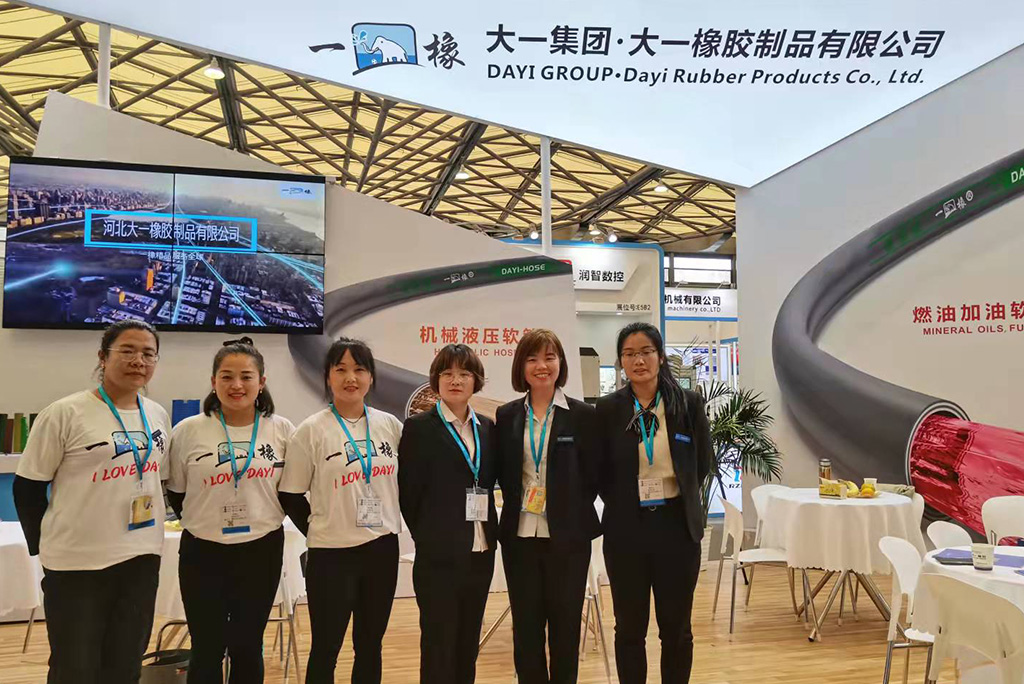335345435
Jul . 28, 2024 22:06 Back to list
Advantages and Applications of Flexible Hydraulic Hoses in Modern Industrial Systems
The Importance of Flexible Hydraulic Hoses in Modern Industry
Flexible hydraulic hoses are essential components in a multitude of industries, serving as vital conduits for fluids under pressure. Their ability to withstand high pressure and extreme temperatures, while maintaining flexibility, makes them indispensable in various applications ranging from construction and agriculture to manufacturing and automotive sectors.
Understanding Flexible Hydraulic Hoses
Hydraulic hoses are designed to transport hydraulic fluids in both high-pressure and low-pressure systems. They are typically constructed from a combination of synthetic rubber, thermoplastic, and, in certain cases, metal reinforcements. The flexibility of these hoses allows them to navigate around machinery and other obstacles, making installation and maintenance easier than rigid piping systems. The construction includes layers an inner tube that carries the fluid, a reinforcement layer that provides strength, and an outer cover that protects against environmental factors such as abrasion, chemicals, and weather.
Key Benefits
1. Flexibility and Versatility One of the most significant advantages of flexible hydraulic hoses is their versatility. They can be easily routed through tight spaces or around corners, which is often not possible with rigid piping. This adaptability is crucial in complex machinery and construction sites where configuration can be challenging.
2. Pressure Resistance These hoses are engineered to withstand extremely high pressures, making them suitable for heavy-duty applications. Depending on the specifications, some flexible hydraulic hoses can tolerate pressures exceeding several thousand psi, ensuring safe operation in demanding environments.
3. Durability and Longevity Modern flexible hydraulic hoses are designed to endure harsh conditions. With technological advancements, manufacturers have created hoses that resist weathering, abrasions, and chemical exposure, which significantly extend their lifespan and reduce the need for frequent replacements. This durability is crucial for maintaining operational efficiency and reducing downtime in industrial settings.
4. Enhanced Safety The reliable construction of flexible hydraulic hoses contributes to safer working environments. High-quality hoses are less likely to rupture or leak, reducing the risk of accidents caused by hydraulic fluid spills. Furthermore, proper hose selection and maintenance are essential for safety protocols in industries utilizing hydraulic systems.
flexible hydraulic hose

Applications Across Industries
Flexible hydraulic hoses are utilized in a variety of applications across different sectors
- Construction In construction, hydraulic hoses are commonly used to power excavators, cranes, and other heavy machinery. Their flexibility allows them to handle the demands of dynamic job sites while providing reliable power transmission.
- Agriculture Farmers rely on flexible hydraulic hoses to operate equipment such as tractors and harvesters. These hoses enable efficient fluid transfer for hydraulic systems that lift heavy loads and control various implements.
- Automotive In the automotive industry, hydraulic hoses are integral to braking systems, power steering, and automotive lifts. Their performance impacts the overall efficiency and safety of vehicles.
- Manufacturing Many manufacturing processes depend on hydraulic machinery for shaping, cutting, and assembling products. Flexible hydraulic hoses play a key role in delivering the necessary hydraulic power for these operations.
Conclusion
In conclusion, flexible hydraulic hoses are vital to the operation of modern machinery across various industries. Their unique properties provide unparalleled flexibility, pressure resistance, durability, and safety, making them the preferred choice for many applications. As technology continues to advance, the design and materials used in these hoses will likely evolve, further enhancing their capabilities and applications. Investing in high-quality hydraulic hoses not only promotes efficiency but also contributes significantly to operational safety and reliability in various industrial contexts.
-
SAE 100 R17 Black Smooth Cover Hydraulic Hose
NewsMar.07,2025
-
SAE 100 R17 Black Smooth Cover Hydraulic Hose
NewsMar.07,2025
-
SAE 100 R17 Black Smooth Cover Hydraulic Hose
NewsMar.07,2025
-
SAE 100 R17 Black Smooth Cover Hydraulic Hose
NewsMar.07,2025
-
SAE 100 R17 Black Smooth Cover Hydraulic Hose
NewsMar.07,2025
-
steel wire braided hydraulic hose
NewsMar.07,2025



